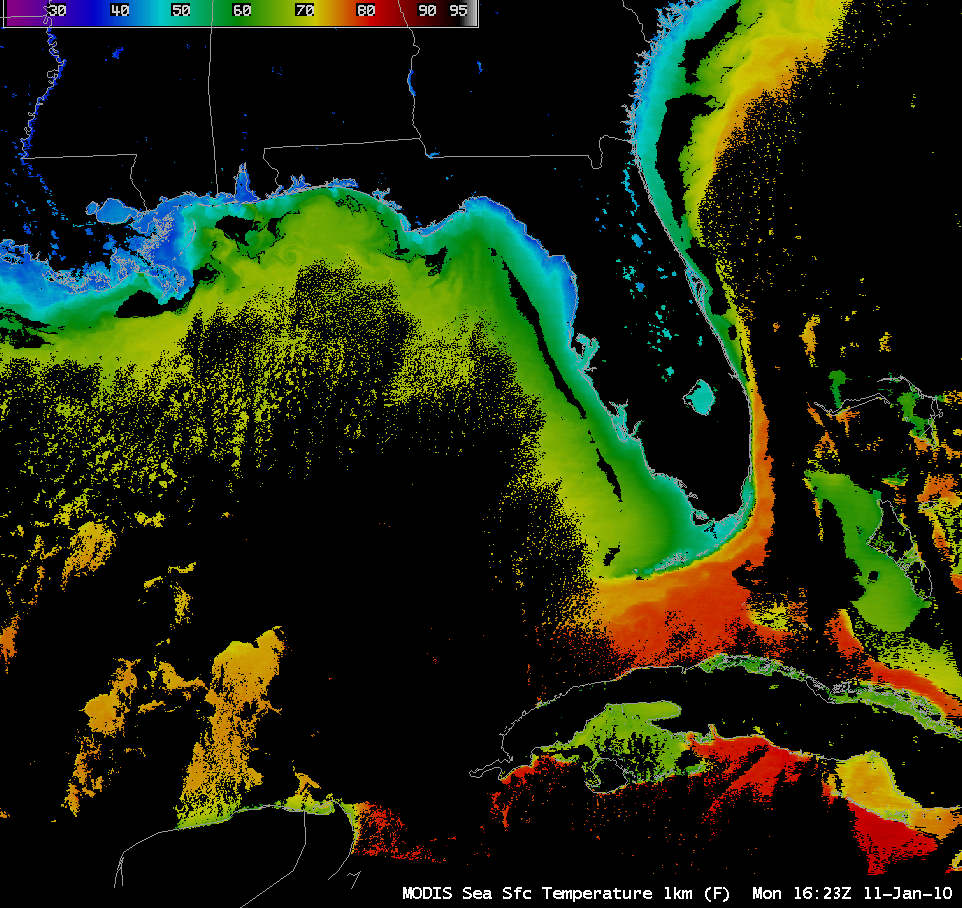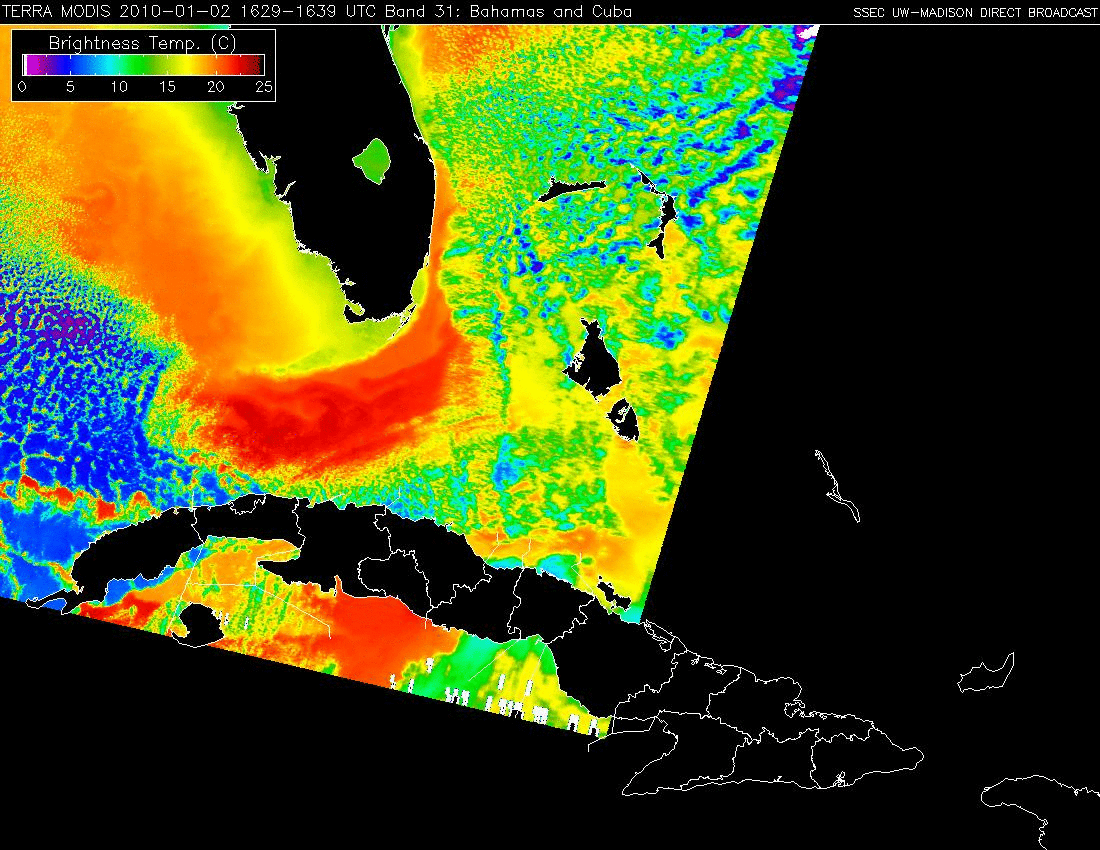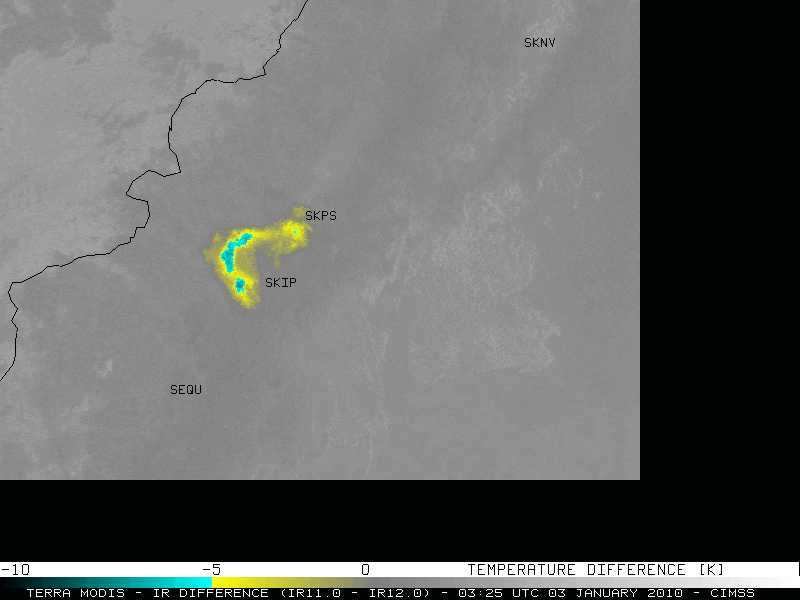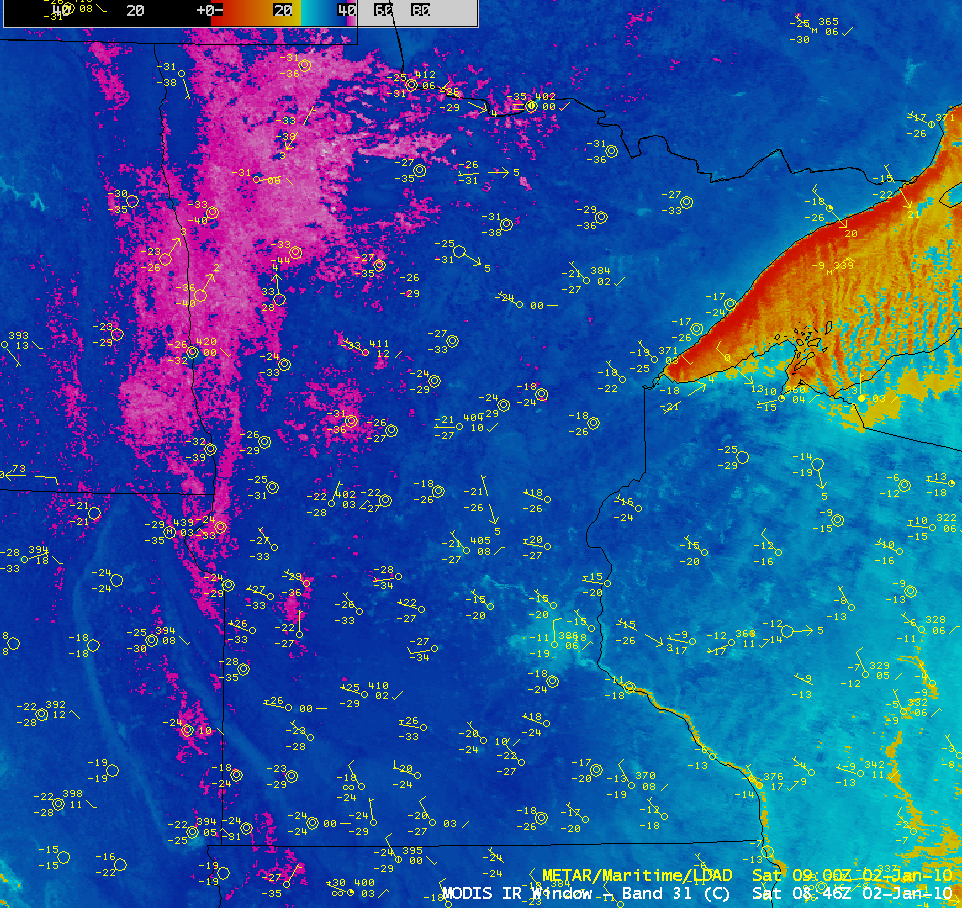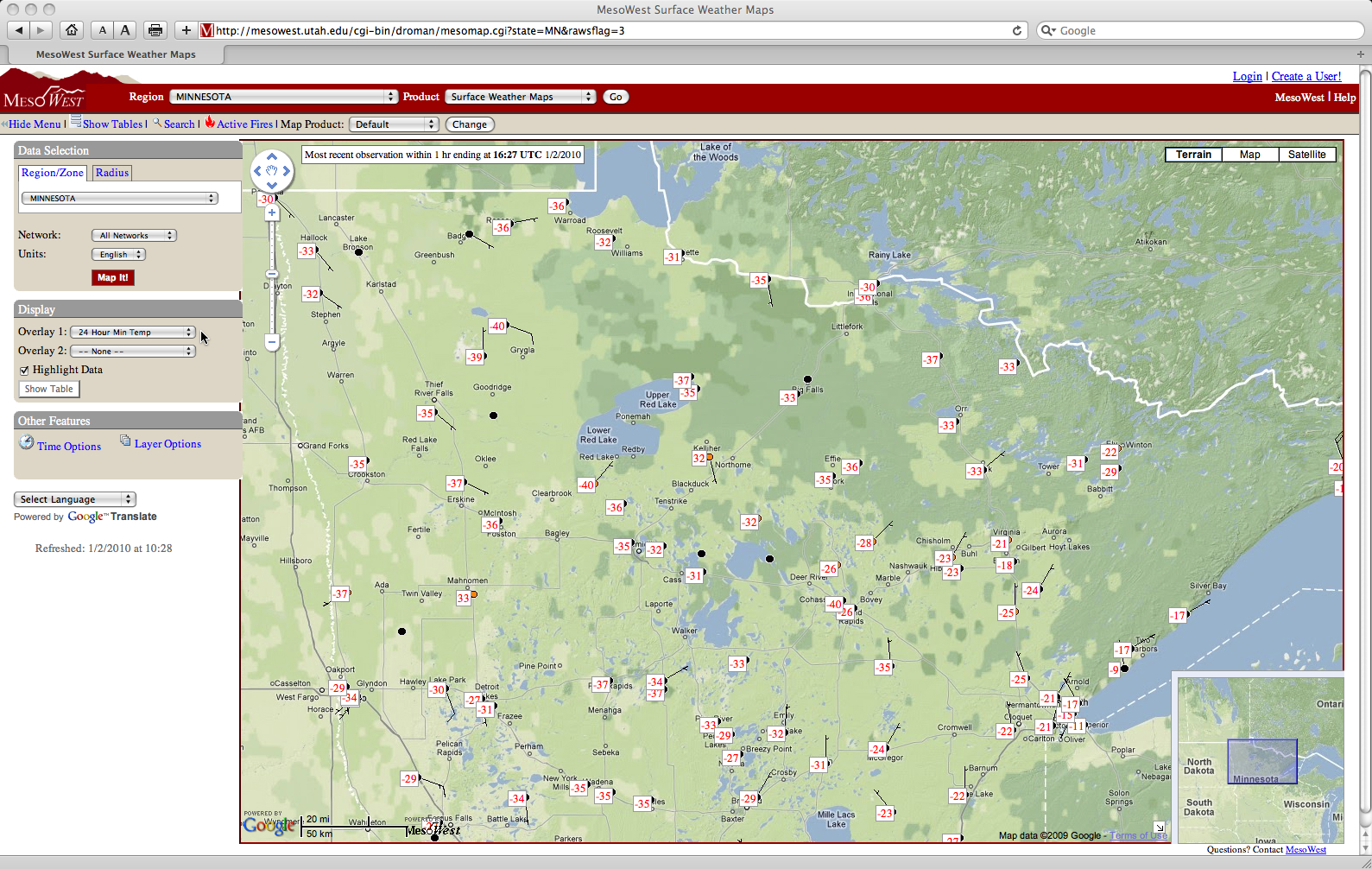AWIPS images of the MODIS Sea Surface Temperature (SST) product and the High-Resolution RTG_SST model surface temperature analysis (above) revealed some important differences between satellite-measured and model-derived SST features on 11 January 2010. In particular, note the very strong MODIS SST gradient across the Florida Keys, with water temperatures cooling from the low 70s F (yellow color enhancement) to the low 60s F (darker green color enhancement) over a very short distance. Farther to the north, MODIS SST values off the coast of Louisiana were only in the upper 30s to low 40s F (darker blue color enhancement), in contrast to the RTG_SST analysis values in the low 50s F.
In addition, MODIS true color and 11.0 µm IR images from the SSEC MODIS Direct Broadcast site (below) indicated that the colder water temperatures coincided with areas of increased water turbidity (resulting from mixing by strong winds over those more shallow waters).
MODIS 11.0 µm IR images from 02 January 2010 and 11 January 2010 (below) gave some indication about how much the waters off the west coast of Florida cooled during that 9-day period of record-setting cold temperatures. At Tampa in western Florida, temperatures during the 02 January to 10 January period were 10 to 30 degrees F below normal, and the length of the cold spell set a new record (with Tampa never reaching 60º F during that entire time). In addition, on the morning of 11 January, with northerly winds gusting to 24 mph:
RECORD EVENT REPORT
NATIONAL WEATHER SERVICE KEY WEST FL
740 AM EST MON JAN 11 2010…RECORD LOW TEMPERATURE SET IN KEY WEST…
THE TEMPERATURE AT KEY WEST AIRPORT DROPPED TO 42 DEGREES AT 455 AM ON MONDAY JANUARY 11TH. THIS SET A NEW RECORD LOW TEMPERATURE FOR THE DATE. THE PREVIOUS RECORD WAS 48 DEGREES SET IN 1970.
THIS WAS ALSO THE SECOND COLDEST TEMPERATURE EVER RECORDED IN KEY WEST…WITH WEATHER RECORDS DATING BACK TO 1873. THE ALL TIME RECORD LOW TEMPERATURE IN KEY WEST IS 41 DEGREES…WHICH HAS OCCURRED TWICE…ON JANUARY 13TH 1981…AND JANUARY 12TH 1886.
View only this post Read Less


